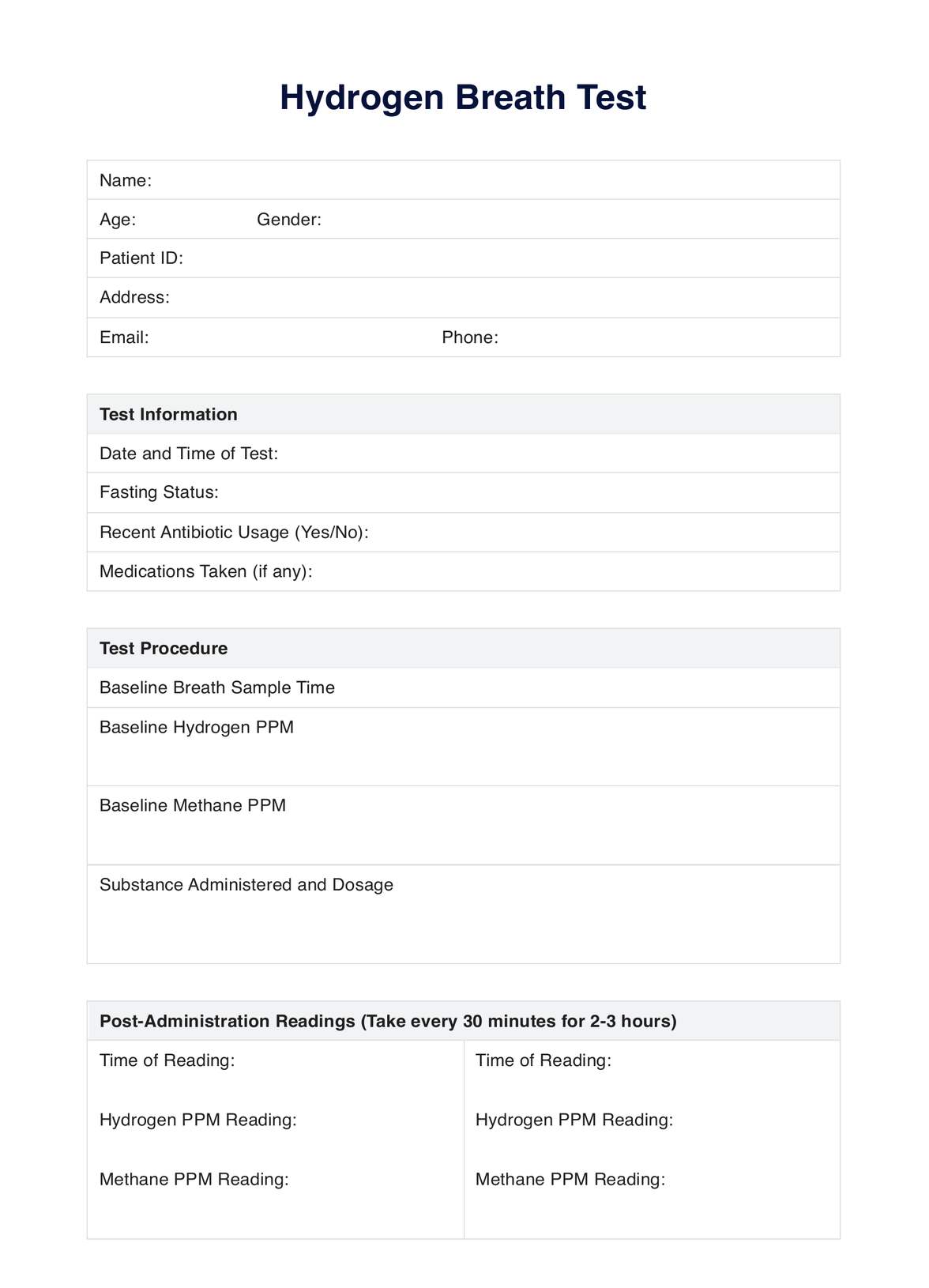A hydrogen breath test primarily diagnoses conditions related to carbohydrate malabsorption, such as lactose intolerance, bacterial overgrowth in the small intestine, and fructose malabsorption.

Hydrogen Breath Test
Explore our guide on Hydrogen Breath Tests, a crucial tool for diagnosing digestive disorders like lactose intolerance and bacterial overgrowth.
Use Template
Hydrogen Breath Test Template
Commonly asked questions
To prepare for a hydrogen breath test, you should fast for at least 12 hours, avoid certain foods and medications as instructed, and refrain from smoking to ensure accurate results.
Yes, you can drink water before a hydrogen breath test, but it should be in moderation, and avoid any flavored or sweetened water.
EHR and practice management software
Get started for free
*No credit card required
Free
$0/usd
Unlimited clients
Telehealth
1GB of storage
Client portal text
Automated billing and online payments











